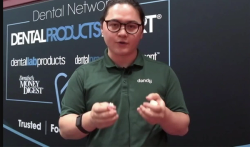- About Us
- Advertise
- Editorial
- Contact Us
- Terms and Conditions
- Privacy Policy
- Do Not Sell My Personal Information
© 2025 MJH Life Sciences™ and Dental Products Report. All rights reserved.
The List: A Timeline of Dental Lab Technology
We journey through the years and look at the origins of the various technologies that a dental lab uses every day.
Dental laboratories do vital work in dentistry, making it even more important for dental labs to be equipped with the technology they need for best practices. Dental lab technology has shifted and changed over the years, and with so many advancements, it can be refreshing and inspiring to look back at the humble beginnings of some everyday dental lab tech.
700 BCE—Dentures
Dentures made from human or animal teeth originated from Etruria, Italy, around 700 BCE. The Etruscans would take teeth from a human or animal and insert them into a metal band of gold. This partial denture would then be fitted onto the remaining teeth. Ivory came onto the scene in the 1700s, followed by porcelain in the 1770s. Ivory became the (expensive) standard until the 20th century came around, when more resin materials made the crafting of dentures more affordable, more efficient, and most importantly, more structurally sound.1
1965—Dental Implants
Although the first dental implants made of shells were seen in the Mayan civilization in Central America, it wasn’t until 1965 that Dr Per-Ingvar Brånemark created a successful implant system closer to what we do today. Using a variety of new, advanced materials currently on the market, today’s lab technicians have built upon Dr Brånemark’s achievements to create implants that achieve osseointegration.2
1980s—3D Printing
With an early focus on prototyping, 3D printing as a technology has evolved past its beginnings to become a popular technology in many dental labs. Invented in the 1980s by Charles Hull, 3D printing was originally known as stereolithography, taking STL files, formatting them through CAD software, then finally transmitting those data to a 3D printer, where the object could be formed using photopolymer. The first commercially available 3D printer, the SLA 250 from 3D Systems, came about in 1988, and the technology has only gotten better from there.3
1990s—Digital Dentistry
Digital dentistry refers to the digital refinement of the dental workflow. Digital dentistry comprises cone beam computed tomography, CAD/CAM milling, digital imaging, and digital x-ray services. With its connecting force between lab and practice, digital dentistry is a key component of keeping customers happy and patients healthy. Digital dentistry has become the standard, paving the way for future technologies.4
2010s—Artificial Intelligence
Artificial intelligence (AI) serves a purpose in both the operatory and the dental lab, creating a machine learning system that assists clinicians and technicians in making the right choices for their patients and customers. With applications in prosthodontics and periodontology, AI can make scanning and analyzing features easier for the dental lab. Implants, dentures, and a variety of other dental features can be designed using the precision of machine learning, being supplemented by the dental technician’s personal touch and experience. AI might just be the next step in optimizing dental lab technology.
References
1. Copy of an Etruscan denture, Europe, 1901-1930. Science Museum Group. Accessed July 25, 2022. https://collection.sciencemuseumgroup.org.uk/objects/co87800/copy-of-an-etruscan-denture-europe-1901-1930-dental-bridge
2. Abraham CM. A brief historical perspective on dental implants, their surface coatings and treatments. Open Dent J. 2014;8:50-55. doi:10.2174/1874210601408010050
3. Ventola CL. Medical applications for 3D printing: current and projected uses. P T. 2014;39(10):704-711.
4. Spielman AI. Technology in dentistry, through the ages. NYU Dentistry. Accessed June 6, 2022. https://dental.nyu.edu/aboutus/history-of-nyucd/technology-in-dentistry-through-the-ages.html

 Download Issue: Dental Lab Products August 2022
Download Issue: Dental Lab Products August 2022

